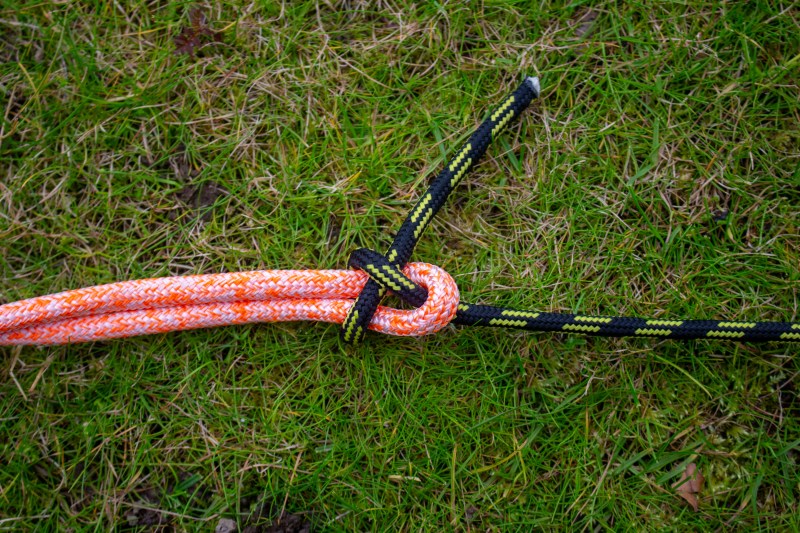
Campers and survivalists often overlook the sheet bend knot despite its longstanding history in sailing and boating. I’ll confess that I didn’t add the sheet bend to my repertoire of outdoor knots until much later than I should have. Looking back, there are countless times that I could have used the sheet bend but had to make do with an inferior choice of knot for the task.
The sheet bend attaches two ropes and is often seen as a variant of the square knot. Unlike the square knot, the sheet bend works with ropes of different thicknesses or stiffnesses to give you a secure attachment. Sheet bends were traditionally used for attaching ropes to sails, hence the name sheet — the name given to ropes in sailing boats. Whether heading out on the high seas or not, you should learn how to tie a sheet bend.

How to tie a sheet bend in three easy steps
Step One
- Make a bight at the end of one piece of rope. If your ropes are different diameters, this should be your thicker rope.
- Take the end of your working rope — the thinner rope, in this case, the black rope — through the loop from the back to the front.

Step Two
- Take the working end of your rope over the top of the tail end of the loop — or bight — that you made in your thicker rope.
- Pass your working rope behind/underneath the bight.

Step Three
- Pass the working end back underneath itself while keeping it above the bight. Pull your knot tight and dress it so it sits tidily.
- The tails of your bight and working rope must finish on the same side of your sheet bend.
Can you tie the sheet bend more securely?
The sheet bend is a knot that derives — and looks similar to — the bowline knot. Like the bowline knot, the sheet bend can work itself loose if it isn’t kept under tension or bounces, which can cause significant issues at the wrong time or place. To make your sheet bend more secure, you can turn it into a double sheet bend with the addition of one turn.
When you reach step three, instead of dressing and tightening your knot, take your working rope, and make another loop underneath your bight. Once you have this extra loop, take the working end through as you usually would, then tighten and dress your knot. By doubling up these loops, you limit the slippage on your knot and ensure that your ropes will stay attached when you want them to.
What is a sheet bend used for in the outdoors?
The reason I first learned the sheet bend still happens to be the reason I use it the most: for tying the corners of a tarp. Most outdoor tarps come with attachment points, but if these break or if you have to make an impromptu tarp shelter out of a more standard tarp, you might not have attachment points for pegs or lines. By making your bight loop out of the corner of the tarp, you can tie your sheet bend around it, giving you a secure attachment point for tying to a tree or pegging into the ground.
Alternative uses for the sheet bend knot include:
- Tying your sailing boat or kayak onto a mooring rope.
- Extending guy ropes on a tent.
- Setting up a fixed line across the camp — perhaps for hanging washing — comprising multiple lengths of rope.





